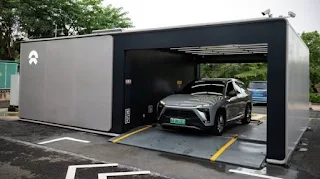The Catch: EU's Conditions on Battery Production
The EU’s offer isn’t without strings attached. A key requirement is that by 2030, all EV batteries for vehicles sold in Europe must be manufactured within the continent. To meet this goal, the EU has laid out the following conditions:
- Technology Transfer: China must transfer EV battery technology to a European firm. This would involve setting up a joint venture (JV) between a European company (holding 60% of the stake) and a Chinese partner (holding 40%).
- Investment Commitment: China would need to invest a minimum of $7.5 billion in Europe to support the joint venture and the establishment of local battery production.
China's Possible Reactions
China’s response to the EU's conditions is uncertain, and there are several potential courses of action under consideration:
- Retaliatory Tariffs: China might impose a 40% tariff on European cars priced above €30,000, which could severely impact brands like Volkswagen, which has a substantial market presence in China.
- Luxury Product Tariffs: Another option for China could be a 50% tariff on European luxury goods, including Burgundy wine, high-end fashion, brandy, and champagne. This could lead to a $3 billion hit to the European luxury sector.
- Investment Redirection: China may choose to halt its investments in Europe and redirect them to other regions like Indonesia and Vietnam, diversifying its economic relationships.
- Accepting the Deal: On the other hand, China might decide to agree to the EU’s terms, following a similar model to what it has done with European pharmaceutical imports, where certain concessions were made for market access.
Analysis of the Key Issues
- Price Cap Agreement: The €30,000 minimum price point shields European manufacturers from lower-cost competition while allowing Chinese brands to target the high-end market.
- European Battery Production: By 2030, the EU aims to bolster its domestic manufacturing capabilities, making Europe a hub for EV battery production.
- Technology and Investment Demands: China's willingness to transfer technology and invest heavily in Europe is a central factor in whether this deal moves forward.
- Strategic Trade Responses: China's options, from retaliation to cooperation, reflect the EV and luxury goods markets' broader geopolitical and economic stakes.
The EU’s proposal strikes a delicate balance between opening its markets and safeguarding local production. It aims to nurture a competitive environment while advancing Europe’s technological and manufacturing self-sufficiency. For China, the decision involves weighing the benefits of market access in Europe against the risks of yielding technological advantages and committing substantial financial resources.
This negotiation is about more than EVs; it’s about influence in the global automotive sector, the future of battery technology, and the economic interplay between two major economic powers. Whether China accepts the EU's conditions or opts for a different path will have far-reaching consequences for the EV industry and broader trade relations. The upcoming months will be crucial in determining if a compromise can be reached or if this issue will spark a larger trade dispute.
Keywords: China, EU tariffs, electric vehicles, EV market, EU-China trade, battery production, technology transfer, luxury tariffs, Volkswagen, global trade, economic negotiation, automotive sector, joint venture, investment strategy.


Post a Comment